It has been more than 20 years since Bosnia and Herzegovina, often shortened to Bosnia, battled the horrors of the Bosnian War. The scars remain in the form of buildings riddled with bullet holes, the war cemeteries, and the roses of Sarajevo which pepper the capital, each one a monument to victims of shelling.
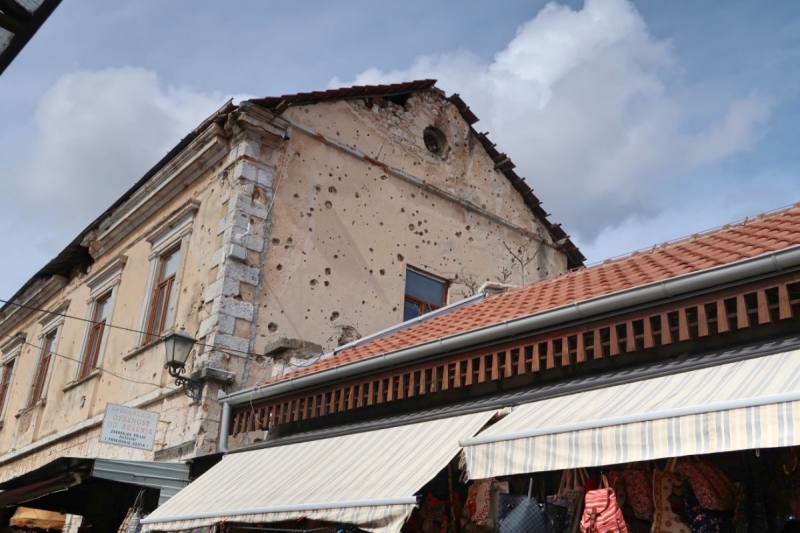
A building in Mostar that bears the scars of the war.
While history has no doubt shaped much of the country, Bosnia has transformed tremendously since its dark days. It is now an up-and-coming travel destination not just for history geeks but also for cultural enthusiasts, nature lovers, and adrenaline-seeking adventurers.
If you only have seven days to experience the country, you can follow or adapt this itinerary which covers three main destinations: Sarajevo, Konjic, and Mostar. It has minimal travel duration from city to city, translating to less time on the road and more time for fun and discovery.
Day 1 and 2: Sarajevo
A fantastic way to be introduced to Sarajevo would be to join one of the many free walking tours. Several companies, such as Meet Bosnia, Insider, and Neno and Friends offer this tip-based tour which stretches for around two hours, taking you around the Old Town and offering tidbits of information along the journey.
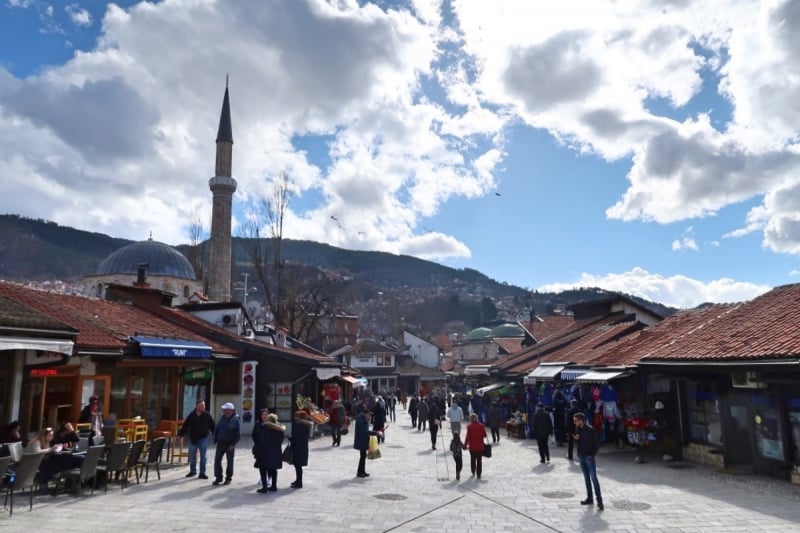
The view from Sebilj in the Old Town
You’ll surely stop by Sebilj, the wooden fountain in Bascarsija, the City Hall which used to be a library that stored millions of books (including rare ones!), and the spot near the Latin Bridge where the assassination of Archduke Franz Ferdinand occurred, sparking World War I. You’ll also get a glimpse of the multi-religious nature of the city, made evident by the presence of mosques, synagogues, and Orthodox and Catholic churches within the same vicinity.
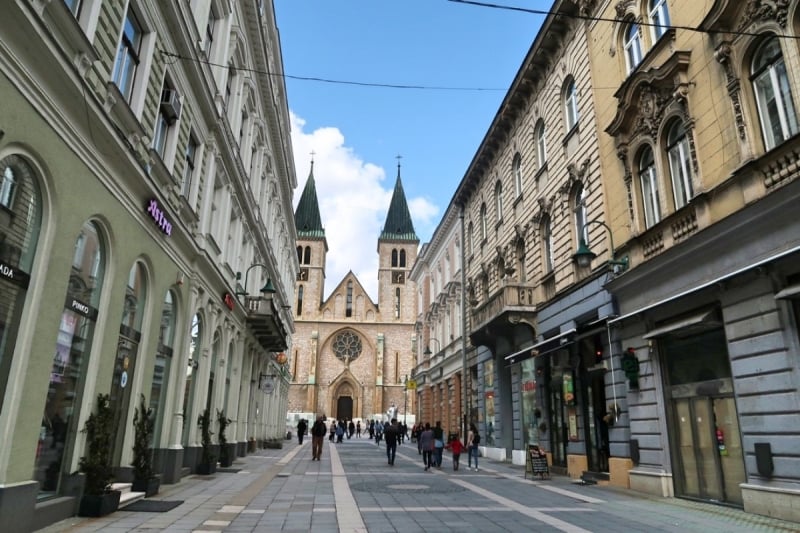
The Sacred Heart Cathedral looming in the background
After the tour, you could revisit the locations that interest you and further explore them. Spend the rest of the day wandering around the core of the city, past rows and rows of grand Austro-Hungarian buildings before reaching the spot on the ground which says “Meeting of Cultures”. Crossing this line where the West quite literally meets the East, you’ll enter the Ottoman part of the old town where you can refuel with burek (baked pastry stuffed with meat, spinach or cheese) or cevapi (grilled meat fingers) and wash it down with Turkish or Bosnian coffee.
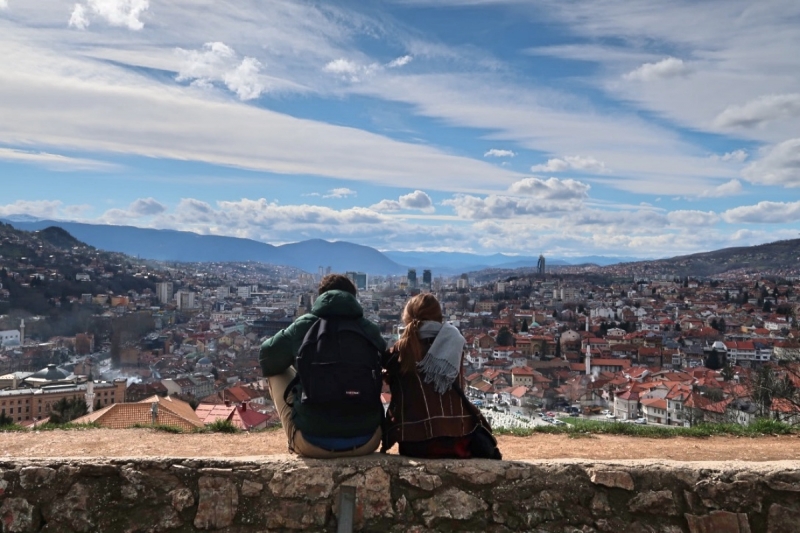
A couple enjoying the views from the Yellow Fortress
End the day with a nice view of the city from a vantage point. Just walk uphill from the Sebilj and you’ll soon reach the Yellow Fortress, a fantastic sunset spot. Wander higher up through the neighbourhood, where kids play along the streets flanked by a combination of beautiful and war-battered buildings, and the White Fortress will come into view. You can sit on the edge of the stone walls, appreciating a bit of its history while savouring the views of the rolling valleys and hills dotted with settlements.
Dedicate your second day in Sarajevo to visiting some of the city’s best museums. I’d highly recommend the War Childhood Museum, the Srebrenica Gallery, and the Museum of Crimes Against Humanity and Genocide. Be warned that these museums tell real stories that will tug at your heartstrings and potentially even scar your soul. If you don’t have the mental strength to go museum-hopping given the themes covered, save some for your final two days in Sarajevo.

Walking along the Olympic Bobsled Track
In between your immersion in the city’s rich (and dark) history, take a breather by retreating into the mountains. There is a recently-opened cable car that carries you to the top of Mount Trebević, where you can have a picnic amidst greenery. Opting for the one-way ticket allows you to make a slow descent back to the city, passing by the now-abandoned Bobsled Track that was used in the 1984 Olympics. Once a professional playground that competitors whizzed on at speeds above 100km/hr, the track which stretches 1.3km is now a canvas for striking graffiti art.
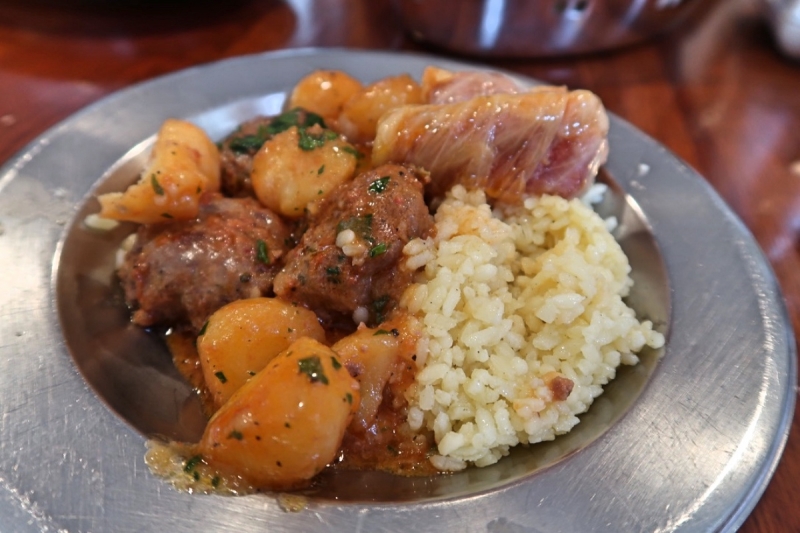
A plate of Bosnian goodness at Ascinica ASDZ
Food recommendations: For burek, Buregdzinica Bosna is hands-down the best place in town. The competition is more intense for cevapi, with Cevabdzinica Mrkva, Kastel, and Zeljo vying for the top spot. Ascinica ASDZ serves canteen-style traditional Bosnian food displayed on trays from which you can take your pick. Other good restaurants serving local food include Dzenita and Morica Han. If you are on a tight budget, go for Chipas (short for chicken and pasta) which serves up huge portions at affordable prices.
Day 3: Konjic
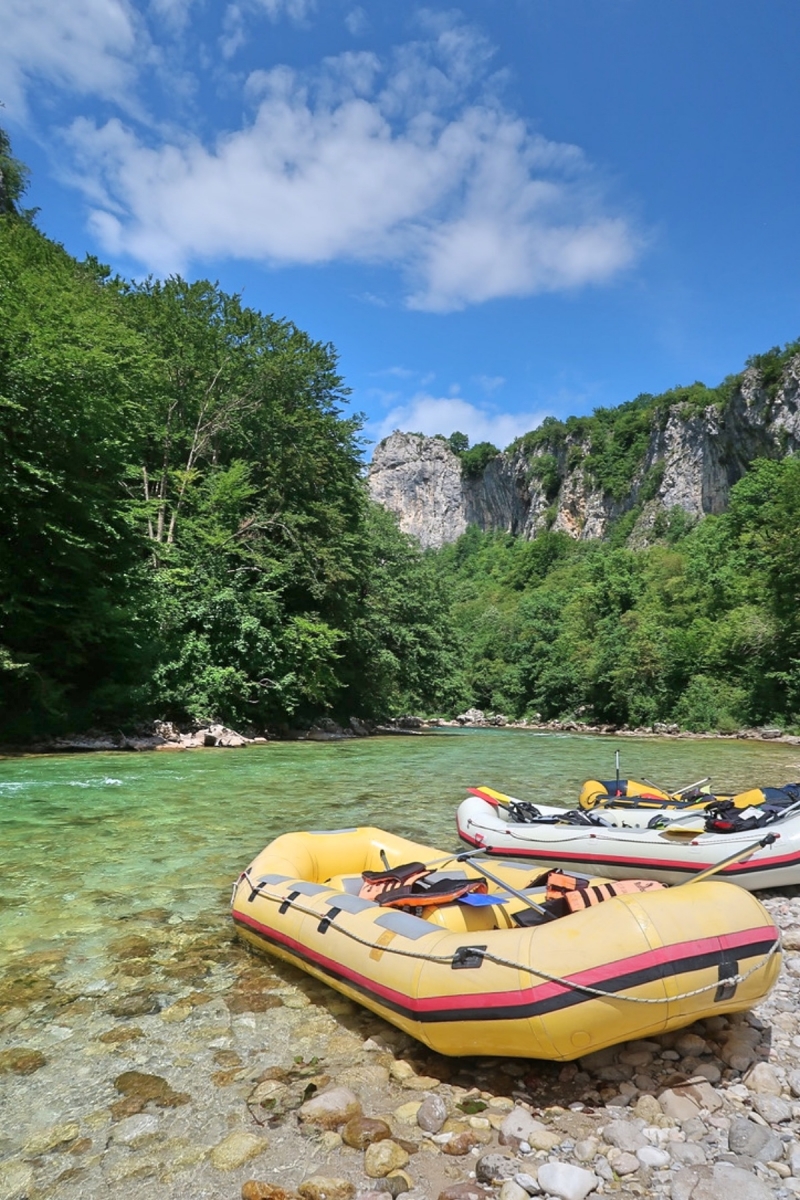
Rafts bobbing on the crystal clear waters of the Neretva River
On your third day, set the alarm early to catch the morning train heading in the direction of Mostar. Drop off 1.5 hours into the journey at Konjic. Straddling the emerald green Neretva River, Konjic is a picturesque town known among tourists as the base for whitewater rafting. A rafting trip through lofty canyons and along rapids, with a break for BBQ lunch, will take up the bulk of the day. If rafting does not appeal to you, make a trip to the once-secret Tito’s Bunker instead and be catapulted to 1950s Yugoslavia. In the summer, you can also go swimming along the pebbled riverside banks.
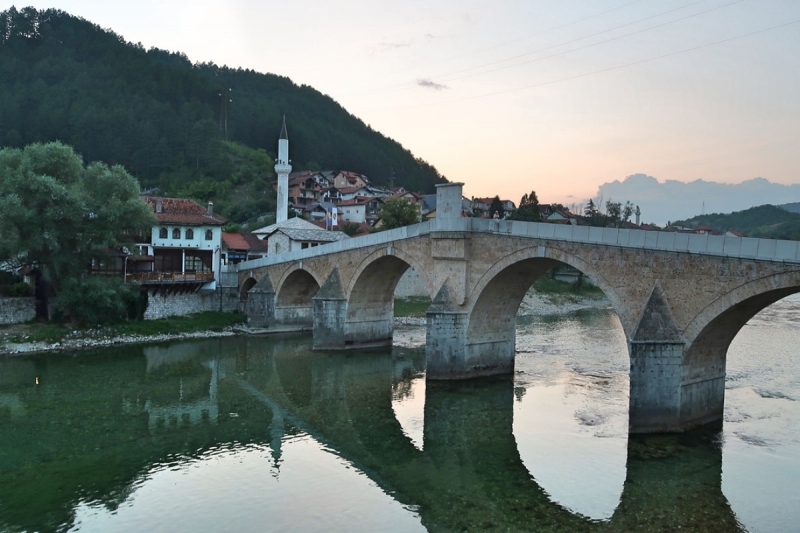
The evening scene in Konjic
In the evening, stroll around the Old Town, pop by the hipster-ish YARD cafe, and take lots of photos of the Stone Bridge which has been the centrepiece of the town since 1682.
Food recommendation: Facing the river, Restaurant Han offers salads, omelettes, pizzas, and grilled dishes on top of traditional local food at reasonable prices.
Day 4 and 5: Mostar
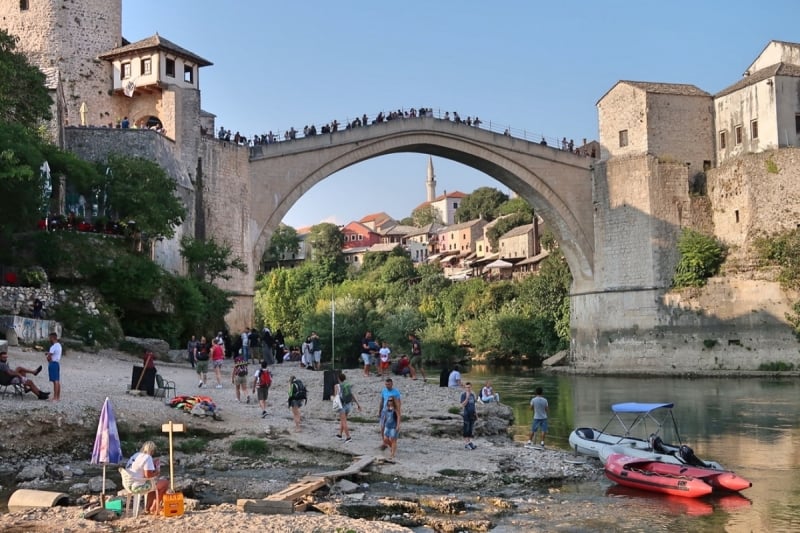
The popular spot where tourists gather to admire Stari Most
Continue your way to Mostar via the one-hour train or bus ride after a night in Konjic. With its setting imprinted on innumerable postcards, Mostar is unquestionably picture-perfect. The famous Stari Most, which translates to “Old Bridge”, spans across the same river which you rafted on the day before. Both sides of the bridge feature a carsija (market) where narrow cobblestone alleys are fronted by little shops selling cashmere scarfs, Turkish lamps, pouches, ceramics, coffee sets, and the ubiquitous magnets.
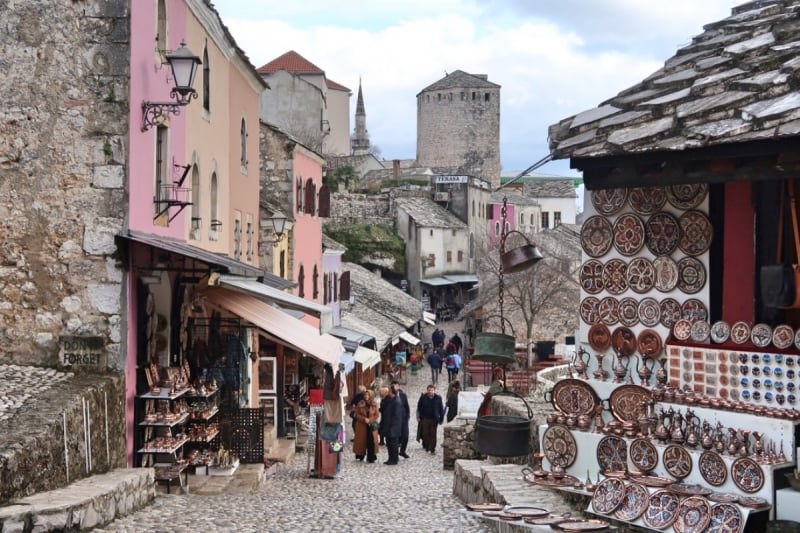
The Old Town in Mostar
Wandering around aimlessly in Mostar and gazing upon Stari Most from multiple viewpoints is the number one thing to do in town. There are, of course, other notable attractions worth visiting such as Muslibegović House, an Ottoman-style home which has been converted into a museum and luxury hotel, as well as the well-preserved Koski Mehmed Paša Mosque, whose draw is not only the ornate interiors but also the panoramic views from its minaret. Squeeze in a free walking tour of Mostar in your itinerary; it will give you more cultural insights and a deeper historical perspective, which is otherwise easily glanced over in the tourist-driven frenzy of the city.
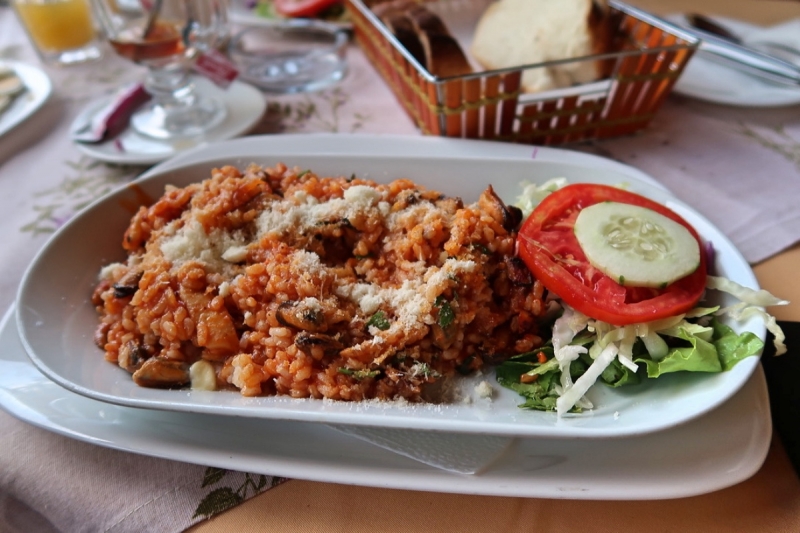
Seafood risotto in Hindi Han
Food recommendations: At the entrance of Sadrvan, a staff dressed in traditional Bosnian costume invites tourists to come in. This restaurant has the makings of a tourist trap but fret not, the prices are fair and the food is fantastic. Alternatively, the nearby Hindi Han, which is often crowded to the point that the service can be slow, is also top-rated. Both restaurants have an extensive menu encompassing traditional dishes and more.
After a day in Mostar, it’s time to explore Herzegovina, the southern region of the country. There are many tours taking visitors to a combination of spots: Pocitelj, Medjugorje, Kravice Waterfall, and Blagaj.
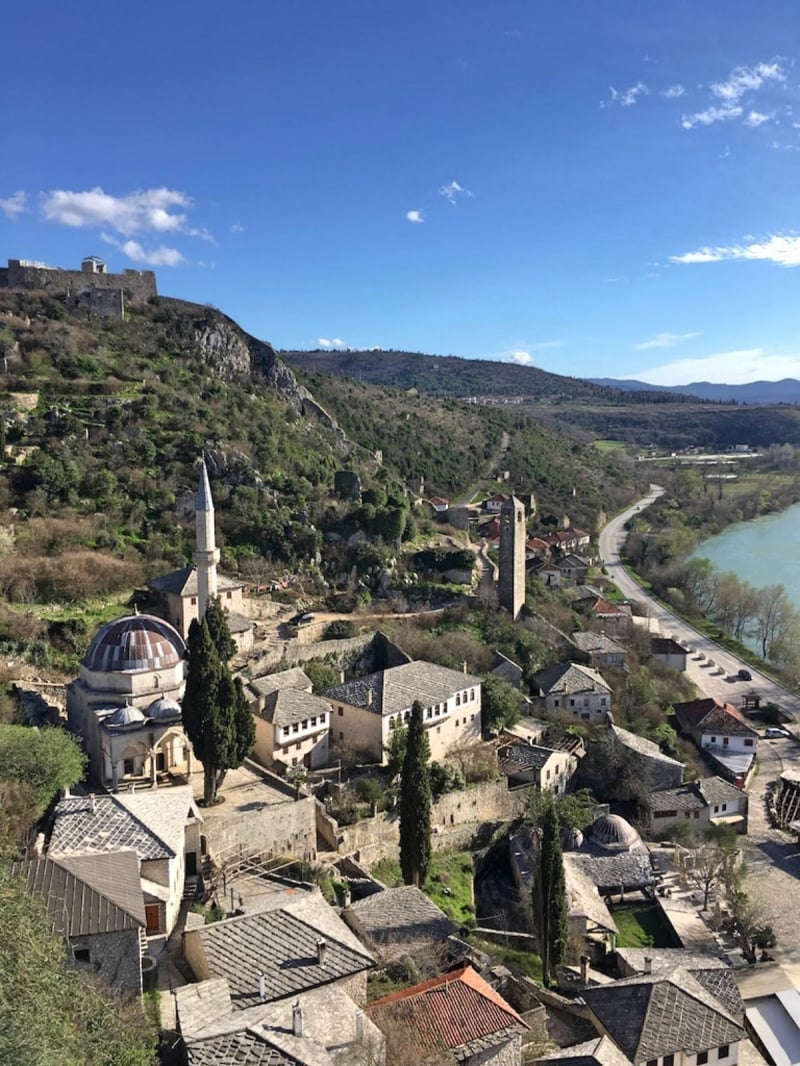
Pocitelj as viewed from the fortress
Pocitelj is a UNESCO-listed fortified village which dates back to the 14th century and is now home to an art colony. Take a walk to the Kula (Fort of Pocitelj) for dreamlike scenery comprised of medieval homes, the fortress walls, as well as the Neretva River. Half an hour away is Medjugorje, a Catholic pilgrimage site where an apparition of the Virgin Mary reportedly appeared to six Herzegovinian children in 1981. Nature lovers will look forward to the Kravice Waterfalls. Here, waters of the Trebižat River tumble down the limestone rocks into the lake below. The deep-green lake is calm and warm enough for swimming in summer.
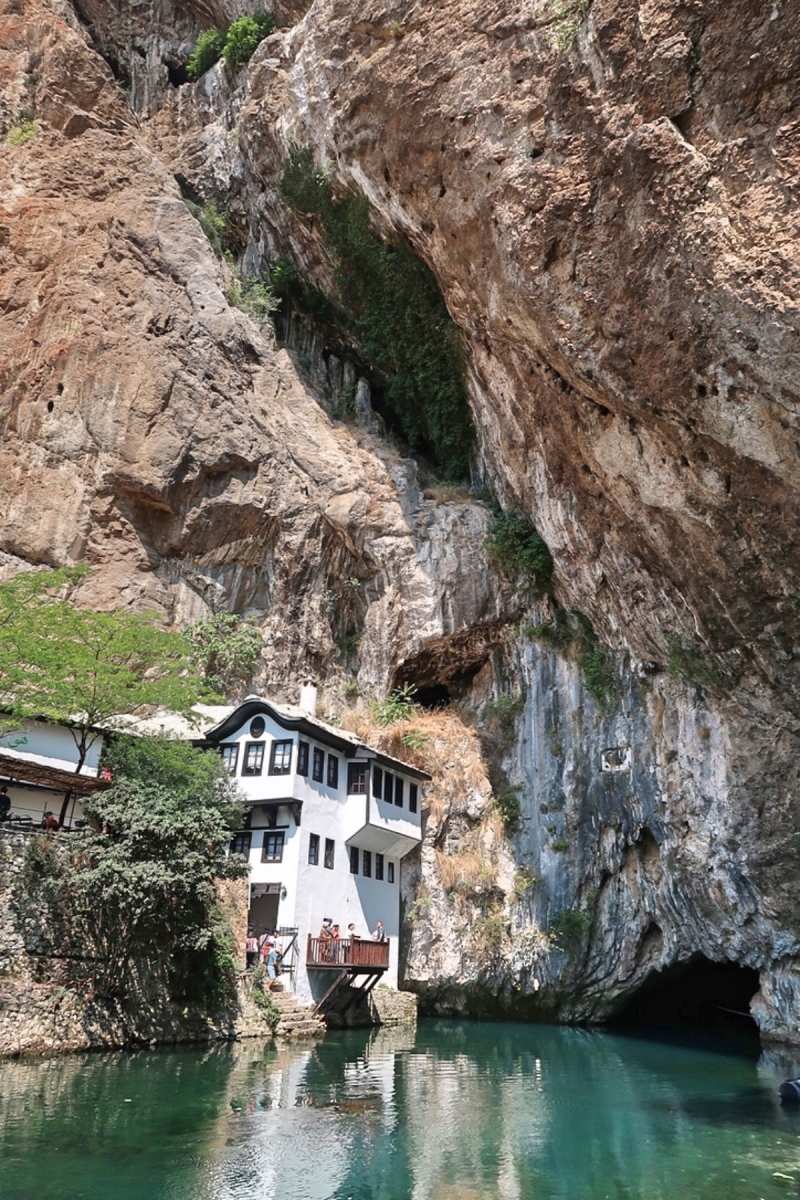
The Tekija against an awe-inspiring backdrop
Nearer to Mostar, Blagaj is where the Tekija, a Dervish monastery, sits near the source of the River Buna. You can enter the reconstructed and refurbished Tekija, hike up to the Blagaj Fortress which is perched atop a cliff, and then dine in one of the many riverside eateries. It’s worth noting that Blagaj is accessible from Mostar via the public buses.
Day 6 and 7: Sarajevo
After two jam-packed days in and around Mostar, hop on the scenic morning train back to Sarajevo. Chances are, you would already have a bunch of activities you’d like to spend time on, be it making a trip to the War Tunnel Museum which lies outside the city, checking out the views from the Avaz Twist Tower, or joining a tour that specialises on a specific theme: the siege of Sarajevo, the Olympic Games held in 1984, the history of the city’s Jewish community, and so on.
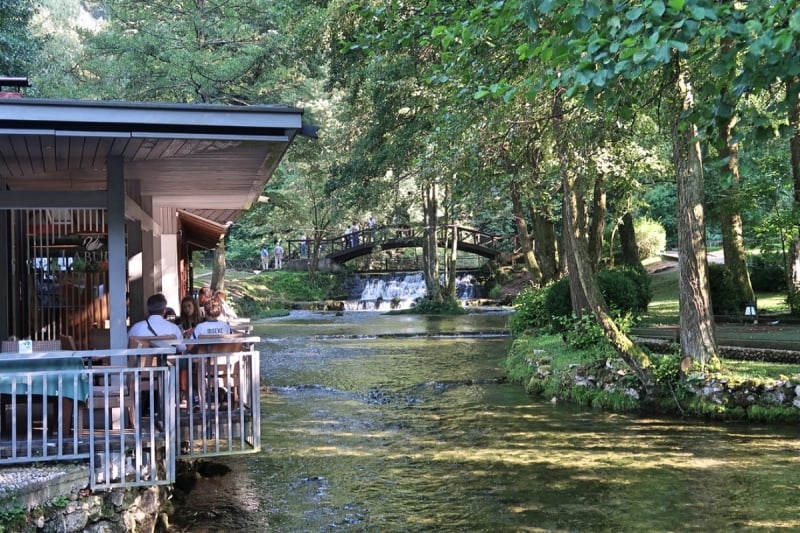
Vrelo Bosne
Otherwise, you can consider making a day trip out of the city. At the foot of Mount Igman lies Vrelo Bosne, a lush public park that is home to the spring of Bosna River. It’s only 30 minutes away from the city centre of Sarajevo by taxi, but its tranquil atmosphere will make you feel as though you’ve just stepped into a different world. Other excursion ideas include visiting Skakavac Waterfall or Bijambare Caves.
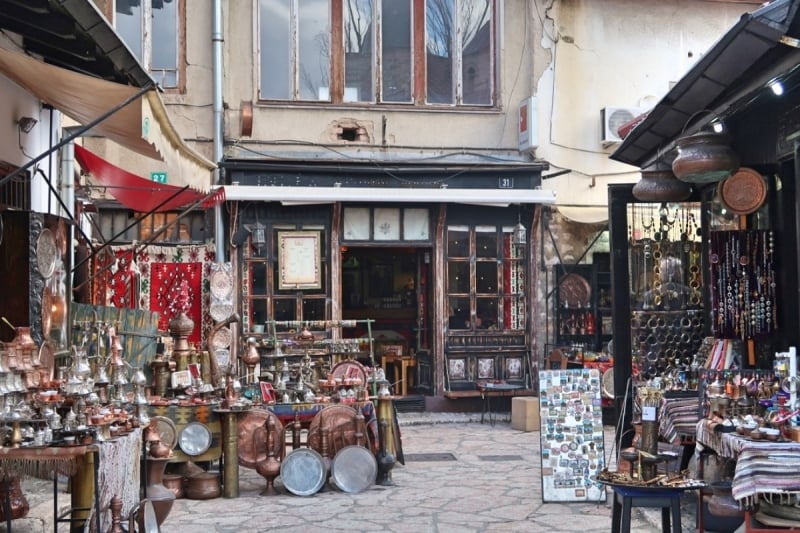
Copper souvenirs to take home with you
Spend your last day in Sarajevo souvenir shopping in Bascarsija and visiting the last of the museums that have caught your eye. In between shopping and sightseeing, take a pause in Zlata Ribica, a quirky pub with a mish-mash of antique and peculiar decorations. But don’t stop the drinks just there. In the evening, drop by the hidden Caffe Hecco, located on the 10th floor of Hotel Hecco which is just next to the Eternal Flame monument. It has a narrow outdoor terrace on all sides of the cafe, offering you sweeping views of the city without needing to put on your hiking shoes. As the sun goes down, bid your farewell to Sarajevo and make a promise to return again.
Also read: A Guide to Bosnia & Herzegovina for Muslim Travellers






